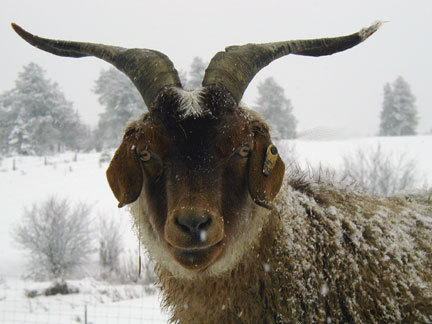
The Economist has an excellent summary of what to look for when you’re buying cashmere. In the past 15 years, cashmere has become a mass-market product. Previously, only the best fibers were taken from goats, and those fibers were milled and woven by artisans in places like Scotland and Italy. Today, standards can be much lower, and garments are often milled, knit and finished in China. In the past, cashmere was made from only the longest, finest fibers from the goat’s underside. Today, there are no such standards, at least for mass-market product.
Here’s how the Economist says you should differentiate between the good stuff (which lasts a lifetime) and the cheap stuff (which can pill in a matter of weeks):
“Look for tension in the knitting: stretch a section and it should ping back into shape. Hold it up to the light and you shouldn’t see much sky: paradoxically, the best cashmere, though made from the finest hair, has a density to it. Examine its surface: fluffiness suggests the yarn was spun from shorter, weaker fibres and will pill. Be sceptical about softness, too. Over-milling can make a garment too soft and silky, and therefore prone to bobbling and losing its shape. More expensive cashmere may be harder to handle in the shop, but will ease up with wear and hand-washing. The best cashmere actually improves with age – so long as the moths don’t get to it.”
The whole article has been transcribed by a thoughtful StyleForum member here.
As for myself – when I’m buying cashmere, I focus on older sweaters (think 1980s and earlier) made in England and Scotland. They can often be had on Ebay for $30-60, and the density and softness of the wool is unparalleled.







